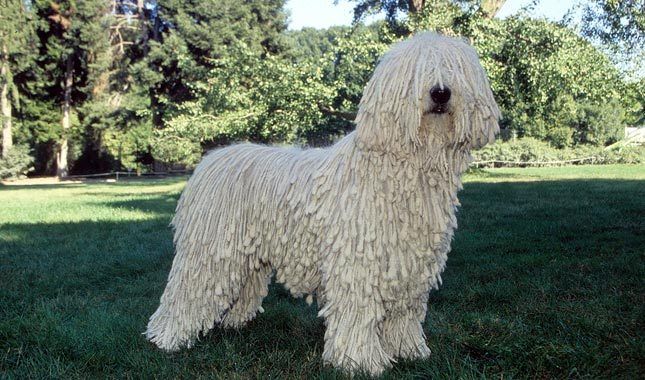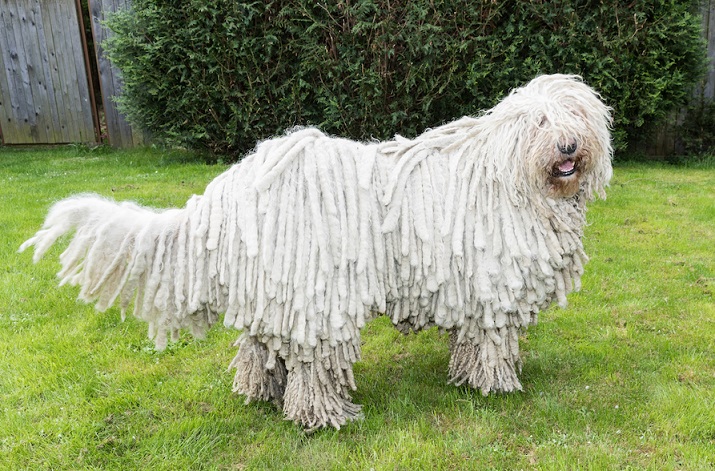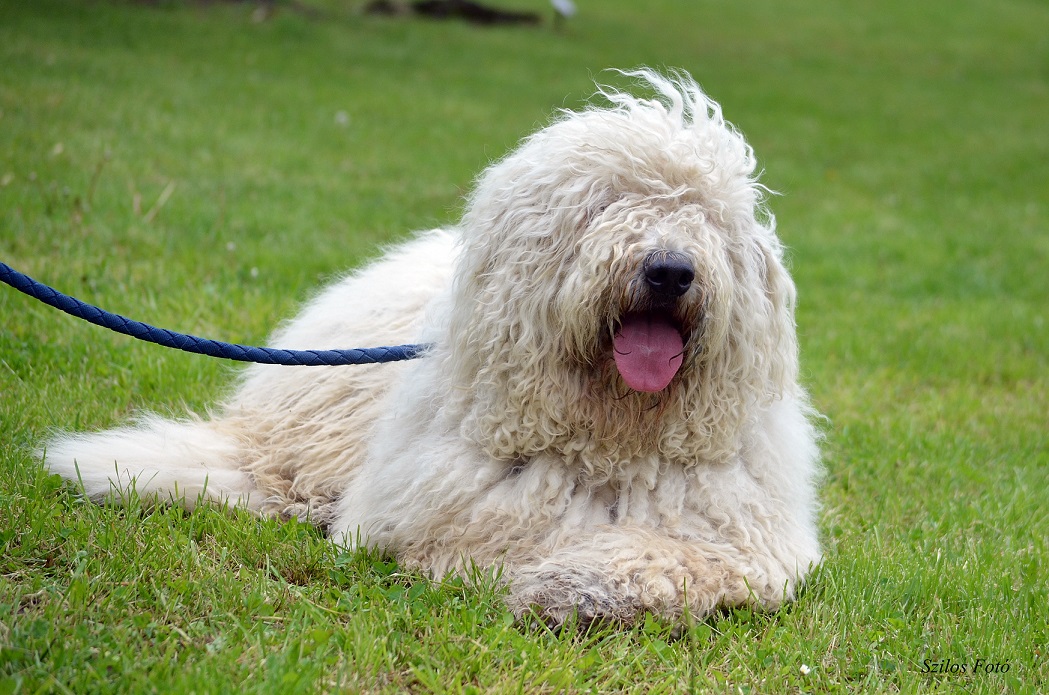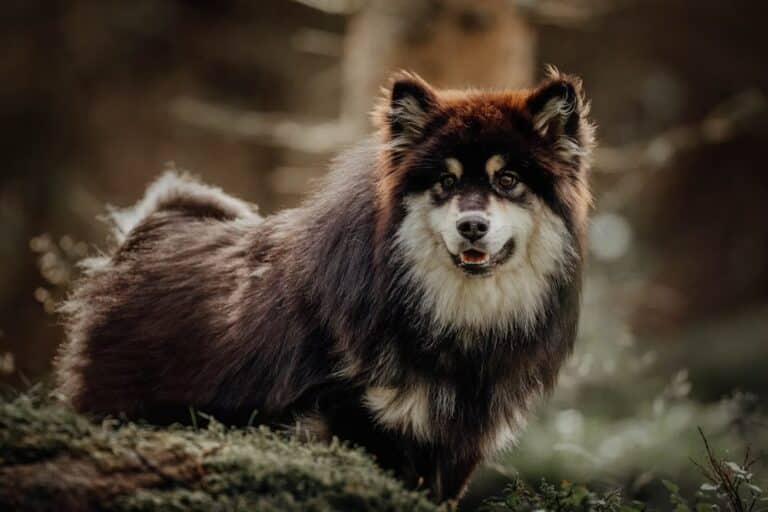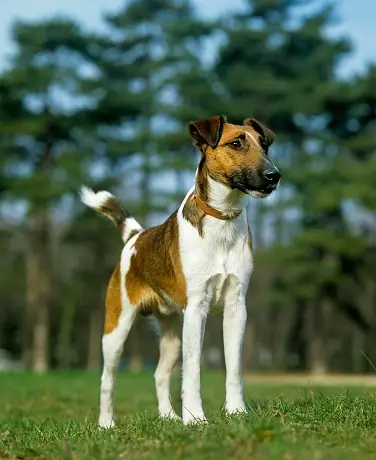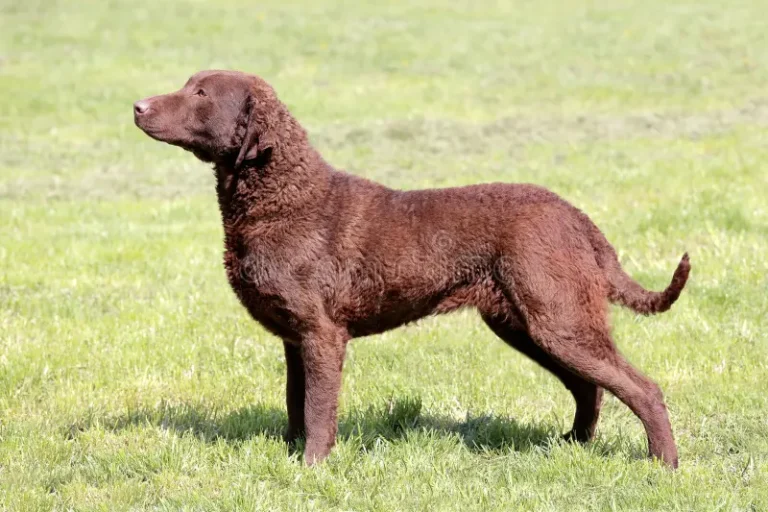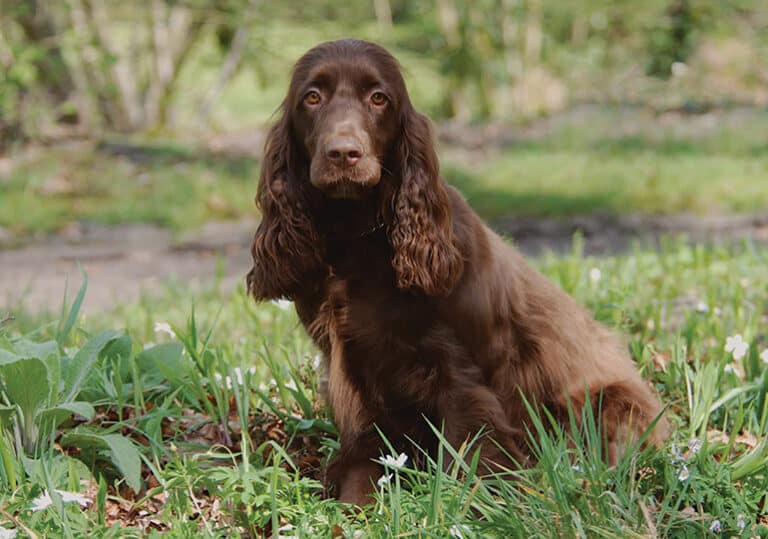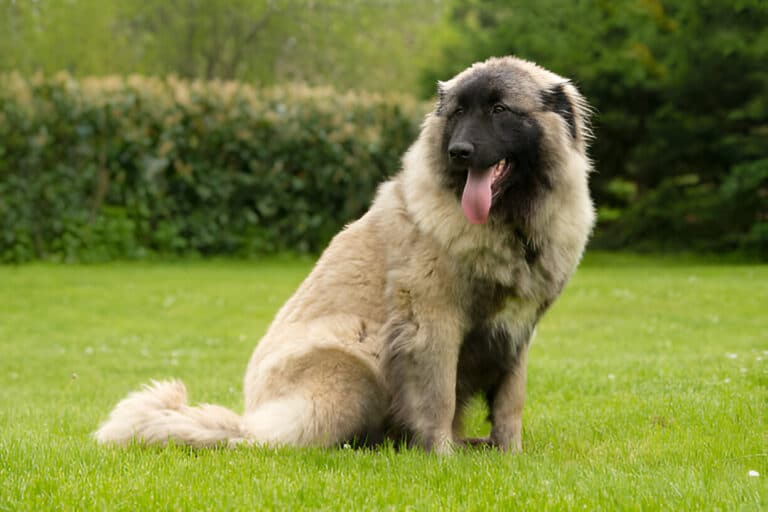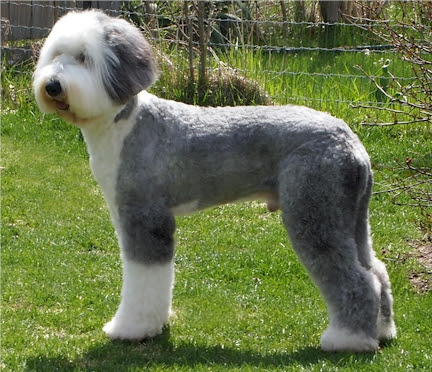Komondor is known for their distinctive long, corded coats, which not only make them stand out from other breeds but also serve a practical purpose in protecting them from harsh weather conditions. In this Guide, we will delve into the history, characteristics, and care requirements of Komondors, shedding light on why they are considered one of the most unique and impressive dog breeds in the world. Whether you are a prospective owner or simply fascinated by these remarkable canines, join us as we explore the captivating world of Komondors.
History of Komondors
Origins of Komondors
The Komondor, also known as the Hungarian Sheepdog, is a unique and fearless breed with a rich history. These magnificent dogs have been guarding livestock in Hungary for centuries, making them an integral part of the country’s culture and heritage.
The origins of the Komondor can be traced back to the ancient Magyar tribes who migrated to Hungary over a thousand years ago. It is believed that these tribes brought with them large, powerful dogs that were used for herding and protecting livestock.
The exact origins of the Komondor are still somewhat debated among experts. Some believe that the breed has ancient roots and can be traced back to the Tibetan Mastiff, while others suggest that they are descendants of the Russian Owtcharka or the Turkish Akbash.
What is certain is that the Komondor developed and adapted to the harsh Hungarian climate and terrain. Their thick, corded coats served as protection against extreme cold weather, predators, and even potential attackers.
Role of Komondors in Hungarian Culture
Komondors have played a vital role in Hungarian culture for centuries. These loyal and fearless dogs were primarily bred to guard livestock, especially sheep, from predators such as wolves and bears.
In Hungarian folklore, the Komondor is often depicted as a symbol of strength, courage, and loyalty. Their unwavering dedication to protecting their charges has made them highly respected and revered by Hungarian shepherds and farmers.
These remarkable dogs have become an inseparable part of the Hungarian way of life. They are not only valued for their exceptional guarding abilities but also for their gentle and affectionate nature with their human families. Komondors are known to form deep bonds with their owners and are often considered a member of the family.
Even today, Komondors continue to be used as working dogs on Hungarian farms. Their presence alone is often enough to deter potential predators, as their imposing size and distinctive corded coat make them an intimidating sight.
In addition to their working roles, Komondors have gained popularity as loyal companions and show dogs around the world. Their unique appearance and proud demeanor make them stand out in any setting, while their loyal and protective nature makes them cherished family pets.
The history of Komondors is deeply intertwined with Hungarian culture. These unique and fearless dogs have been guarding livestock and serving as loyal companions for centuries. Their origins may be debated, but their importance to the Hungarian way of life is unquestionable. Whether working on farms or living as cherished pets, Komondors continue to captivate hearts with their unrivaled strength, courage, and loyalty.
Physical Characteristics
Distinctive Coat of Komondors
Komondors are famous for their unique and striking coat that sets them apart from other dog breeds. The most notable feature of their coat is its cords, which resemble long, thick dreadlocks. These cords start to form when the Komondor is around 8-10 months old and continue to develop throughout their lifetime. The cords serve as a protective layer, not only against harsh weather conditions but also against potential predators. This distinct coat helps the Komondors blend in with their flock and provides excellent camouflage when herding in the open fields.
Size and Build of Komondors
Komondors are large and muscular dogs with a robust build. Males typically stand between 27 to 31.5 inches (69-80 cm) at the shoulder, while females are slightly smaller, measuring between 25.5 to 27.5 inches (65-70 cm). These Hungarian sheepdogs have a well-balanced and sturdy physique, giving them the strength and endurance required for their herding duties. Their solid bone structure and deep chest contribute to their overall impressive appearance.
Other Physical Features
Aside from their distinctive coat and size, Komondors possess several other physical features that make them unique. They have a large head, adorned with a prominent forehead and a well-defined stop. Their almond-shaped eyes are dark brown and provide an intelligent and attentive expression. Komondors have V-shaped ears that hang close to their cheeks, framing their face. Their muzzles are powerful and slightly taper towards the nose.
Furthermore, the Komondors’ neck is strong and muscular, blending smoothly into their well-developed shoulders. Their body is well-proportioned, with a level topline and a deep, broad chest. These dogs have a straight back and a moderately tucked-up abdomen. Komondors have a well-set tail that reaches down to their hocks in a natural, relaxed position.
Komondors possess a range of physical characteristics that make them truly remarkable. Their distinctive coat, size, and overall build contribute to their fearless and commanding presence. Additionally, their unique facial features and well-structured bodies perfectly complement their role as Hungarian sheepdogs.
Temperament and Behavior
Loyalty and Devotion
Komondors are known for their unwavering loyalty and devotion to their owners. These Hungarian sheepdogs form strong bonds with their families and are always eager to please. They are highly protective of their loved ones and will go to great lengths to ensure their safety. Komondors are known to be extremely dedicated and will always stand by their owners, making them excellent companions.
Protectiveness and Fearlessness
One of the most notable characteristics of Komondors is their protectiveness and fearlessness. These dogs were originally bred to guard livestock and their protective instincts are deeply ingrained in their nature. Komondors are always vigilant and alert, ready to defend their territory and loved ones from any potential threat. Their sheer size and intimidating appearance, combined with their unwavering bravery, make them an excellent choice for guarding homes, properties, and even families.
Interaction with Other Animals
When it comes to interacting with other animals, Komondors can be somewhat aloof and reserved. Due to their strong guarding instincts, they may not readily accept unfamiliar animals into their territory. However, with proper socialization and training from an early age, they can learn to coexist peacefully with other pets in the household. It is important to introduce them to different animals gradually and under controlled circumstances to ensure a positive and harmonious relationship.
Komondors have a natural tendency to establish themselves as the alpha in any animal group, so it is crucial for their owners to establish clear boundaries and provide consistent leadership. With the right guidance and socialization, Komondors can learn to peacefully coexist with other animals, making them a great addition to multi-pet households.
Komondors possess a unique temperament and behavior that sets them apart. Their loyalty and devotion make them excellent companions, while their protectiveness and fearlessness make them exceptional guardians. With proper training and socialization, they can learn to interact positively with other animals, making them a well-rounded and cherished member of any family.
Training and Socialization
Importance of Early Training
Training is an essential aspect of raising a Komondor, as it helps shape their behavior and ensures they grow up to be well-behaved and obedient dogs. Early training is particularly crucial for Komondors due to their strong-willed nature and protective instincts.
Starting training from a young age allows Komondor puppies to develop good habits and learn basic commands. It establishes a strong foundation for their future training, making it easier to address any behavioral issues that may arise as they grow older.
Challenges and Tips for Training Komondors
Training a Komondor can present unique challenges, primarily because they are independent thinkers and can be stubborn at times. However, with patience, consistency, and positive reinforcement techniques, you can successfully train your Komondor.
Here are some tips to overcome training challenges specific to Komondors:
- Establish yourself as the pack leader: Komondors are natural protectors, so it’s important to establish yourself as the alpha figure. Be firm, confident, and consistent in your commands and expectations.
- Start with basic obedience commands: Begin training with fundamental commands like sit, stay, and come. Use positive reinforcement techniques such as treats, praise, and rewards to motivate your Komondor and reinforce good behavior.
- Provide mental and physical stimulation: Komondors are intelligent dogs that require mental and physical stimulation. Incorporate interactive toys, puzzle games, and regular exercise into their routine to keep them engaged and prevent boredom.
- Be patient and consistent: Komondors may take longer to grasp commands compared to other breeds. Remain patient and consistent in your training efforts, and avoid becoming frustrated or resorting to harsh training methods. Positive reinforcement and repetition will yield better results.
Socializing Komondors with People and Pets
Proper socialization is vital to ensure that Komondors grow up to be well-adjusted and friendly dogs. Early socialization helps them develop positive relationships with both humans and other animals.
Here are some tips for socializing your Komondor:
- Start early: Begin socializing your Komondor puppy as soon as you bring them home. Expose them to various environments, people of different ages and appearances, and well-behaved dogs to help them become comfortable and confident in different situations.
- Positive experiences: Make sure that your Komondor has positive experiences during socialization. Reward them with treats, praise, and affection when they display calm and friendly behavior towards new people and pets.
- Gradual exposure: Introduce your Komondor to new people and pets gradually, in controlled and supervised settings. Avoid overwhelming them with too many new experiences or stimuli at once, as this may cause fear or anxiety.
- Training classes: Enroll your Komondor in obedience classes or socialization groups to provide them with structured socialization experiences. These classes can help them interact with other dogs and learn proper behavior in a controlled environment.
Remember, socialization is an ongoing process that should continue throughout your Komondor’s life. Regular exposure to different environments, people, and animals will help maintain their sociable and well-mannered nature.
Health and Care
Common Health Issues
Komondors are generally healthy dogs, but like all breeds, they are prone to certain health issues. Being aware of these common health problems can help you take better care of your beloved Hungarian Sheepdog.
- Hip Dysplasia: This is a hereditary condition where the hip joint doesn’t develop properly. It can cause discomfort and lead to arthritis if not addressed. Regular veterinary check-ups and maintaining a healthy weight can help prevent or manage this condition.
- Bloat: Also known as gastric torsion, this is a life-threatening condition that affects deep-chested breeds like Komondors. It occurs when the stomach fills with gas and twists upon itself. Symptoms include restlessness, unsuccessful attempts to vomit, and a distended abdomen. Immediate veterinary assistance is crucial for dogs suspected of bloat.
- Eye Problems: Komondors are susceptible to several eye conditions, including progressive retinal atrophy (PRA), cataracts, and entropion. Regular eye examinations by a veterinarian can help detect and treat these issues early on, ensuring your dog’s vision remains healthy.
Grooming and Coat Maintenance
The distinctive corded coat of a Komondor requires special grooming attention to keep it clean and healthy. Here are some tips for grooming and coat maintenance:
- Bathing: Due to their unique coat, Komondors should not be bathed frequently as it can ruin their cords. Instead, they require regular spot cleaning to remove dirt and debris. Use a damp cloth or sponge to wipe down their coat and keep it fresh.
- Drying: After your Komondor gets wet, it’s essential to thoroughly dry their coat. Use a towel to remove excess moisture and then allow their cords to air dry. Make sure the cords are completely dry to prevent any unpleasant odors or skin irritations.
- Brushing: Komondors do not require traditional brushing since their cords form naturally. However, occasional separation of cords may be necessary to prevent matting. Gently separate any tangled cords using your fingers, ensuring not to break or damage them.
- Trimming: Regular trimming of nails is necessary to keep your Komondor’s paws healthy and prevent discomfort. Additionally, pay attention to their ears and teeth. Clean their ears regularly and brush their teeth to maintain good oral hygiene.
Exercise and Nutrition
Proper exercise and a balanced diet are crucial for the overall health and well-being of your Komondor. Here are some guidelines to follow:
- Exercise: Despite their large size, Komondors have moderate exercise needs. Daily walks, playtime, and mental stimulation are essential to keep them physically and mentally fit. However, avoid intense exercise during their puppy stage to protect their developing joints.
- Nutrition: Provide your Komondor with high-quality dog food formulated for large breeds. Make sure the food contains all the necessary nutrients and is appropriate for their age and activity level. Avoid overfeeding to prevent obesity, which can lead to joint problems.
- Feeding Schedule: Divide your Komondor’s daily food into two or three meals to prevent bloating. Avoid strenuous exercise immediately before or after meals. Additionally, always ensure your dog has access to fresh water throughout the day.
Remember, regular veterinary check-ups, a balanced diet, proper grooming, and exercise are essential for maintaining the health and well-being of your Komondor. By following these guidelines, you can ensure your Hungarian Sheepdog leads a happy and healthy life.
Komondors are truly remarkable and fearless Hungarian Sheepdogs. Their unique appearance, consisting of long, corded fur, sets them apart from any other breed. Not only are they visually striking, but they also possess an unwavering loyalty and protective nature that makes them exceptional working dogs. Despite their size and strength, Komondors are gentle and affectionate with their families, making them wonderful companions. Whether guarding livestock or providing unconditional love, Komondors are an extraordinary breed that brings joy and security to those fortunate enough to have them in their lives.

